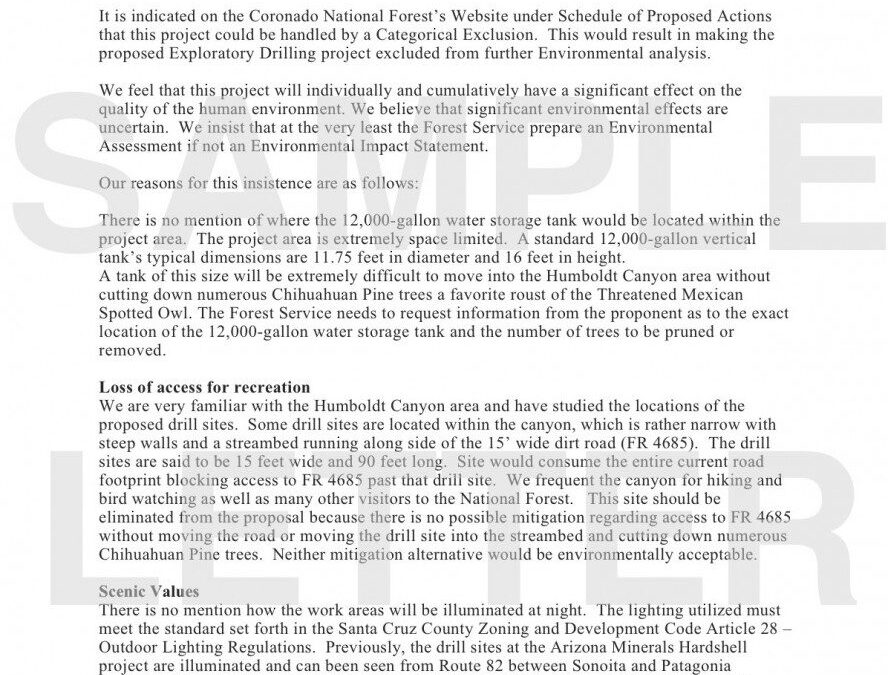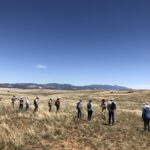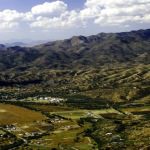By Jenny Neeley, Conservation Policy Director & Legal Counsel of Sky Island Alliance
Introduction
The National Environmental Policy Act (NEPA) requires federal agencies to go through a public “scoping process” in order to determining the scope of issues to be addressed in an environmental assessment (EA) or environmental impact statement (EIS). To start the process, the agency must issue a Notice of Intent and invite public input on the scope of issues to be examined. The US Forest Service is required to go through a public scoping process for all proposed actions, including those that the Forest proposes to categorically exclude from NEPA analysis.
When agencies give proposed projects a “categorical exclusion” from NEPA, the agency is not required to take a close look at the environmental impacts of the project. Below is more information on how the public can engage in the scoping process and make the case that the project should not be categorically excluded, but should instead be subject to an EA or an EIS under NEPA.
What is a Categorical Exclusion?
A categorical exclusion (referred to as ‘CE’ or ‘Cat Ex’) is a category of actions established by each individual agency that are exempted from the NEPA requirements to prepare an EA or EIS because they are considered to not have a significant effect on the human environment, either individually or cumulatively.¹ A proposed action may be categorically excluded from preparing an EIS or EA only if it fits into one of these categories and “if there are no extraordinary circumstances related to the proposed action.”
Challenging Categorical Exclusions in Scoping Comments
There are four steps to writing effective comments that challenge the use of categorical exclusions:
1. Check the mining plan to make sure the proposed action fits into the categorical exclusion for mineral exploration activities: “Short-term (1 year or less) mineral, energy, or geophysical investigations and their incidental support activities that may require cross-country travel by vehicles and equipment, construction of less than 1 mile of low standard road, or use and minor repair of existing roads.”² If the proposed action does not meet these parameters, then it cannot be excluded from NEPA.
2. Determine whether there are any “extraordinary circumstances” that relate to this proposed action: Resource conditions that are considered in determining whether extraordinary circumstances exist are:
- Federally listed threatened or endangered species or designated critical habitat, species proposed for Federal listing or proposed critical habitat, or Forest Service sensitive species; View list for Patagonia Mountain area.
- Flood plains, wetlands, or municipal watersheds;
- Congressionally designated areas, such as wilderness, wilderness study areas, or national recreation areas;
- Inventoried roadless areas or potential wilderness areas;
- Research natural areas;
- American Indians and Alaska Native religious or cultural sites, and
- Archaeological sites, or historic properties or areas.³
3. If one or more of the above resource conditions exist in the project area, you must demonstrate that:
- There is a cause-and-effect relationship between a proposed action and the potential effect on the resource conditions considered “extraordinary circumstances,” and
- The degree of potential effect on those resources – including cumulative effects – raises uncertainty over whether those effects are significant. If you can raise this uncertainty about the significance of potential impacts, you can make a good case for precluding the use of a categorical exclusion.
4. Show that the impacts of all past, present, and reasonably foreseeable future actions in the project area raise uncertainty about the significance of the “cumulative impacts” of this project. The Forest is required to examine the impacts of all past, present, and reasonably foreseeable future actions in the project area, regardless of what agency or entity is undertaking those actions, and determine the potential for cumulative impacts. When a project is proposed to receive a cat ex, you can make the case for preparing an EA by raising uncertainty over the significance of these effects.
Asking for an EA and Identifying Scope of Issues
After making the case that a categorical exclusion is inappropriate, don’t forget to also identify the scope of issues you think should be addressed in the EA you are asking the agency to prepare. It is important submit comments identifying the full range of resources and issues that may be impacted by the proposed action. These resources and issues generally include:
- Water quality
- Water quantity
- Air quality
- Soils
- Vegetation and wildlife
- Threatened and endangered species
- Wildlife corridors/wildlife movement
- Cultural resources
- Visual resources and scenic values
- Dark Skies
- Recreation
- Public safety
- Transportation
- Socioeconomic Impacts
- Cumulative Impacts
Remember: you don’t have to do the analysis for them. At the scoping stage, you just need to identify the issues they must analyze. You should also submit any research or supporting documentation that is relevant to assessing the impacts of this project on the identified resources. The agency is obligated to consider this material in its assessment.
Other online resources:
USFS NEPA Handbook: Categorical Exclusions
Challenging Categorical Exclusions in Scoping Comments: Letter Template
[Date]
[Address]
[Re: Project name]
Open your letter with something personal describing why you care about this place: “I am a resident of Patagonia;” “I often visit the Patagonia Mountains for recreation/employment/tourism;” “I own a property in the area;” etc.
This project should not qualify for a categorical exclusion from NEPA. a) Extraordinary circumstances in the project area raise uncertainty about the project’s impacts; and b) The potential for cumulative impacts raise uncertainty about the project’s impacts. (See above for more information on how to make this argument effectively.)
The agency [Forest Service] should prepare an environmental assessment to analyze the impacts of this project on all the resources in the project area. (See above for sample list of resources and issues to identify.)
August 15, 2013 public comment deadline for Regal Resources Sunnyside mining exploration proposal.
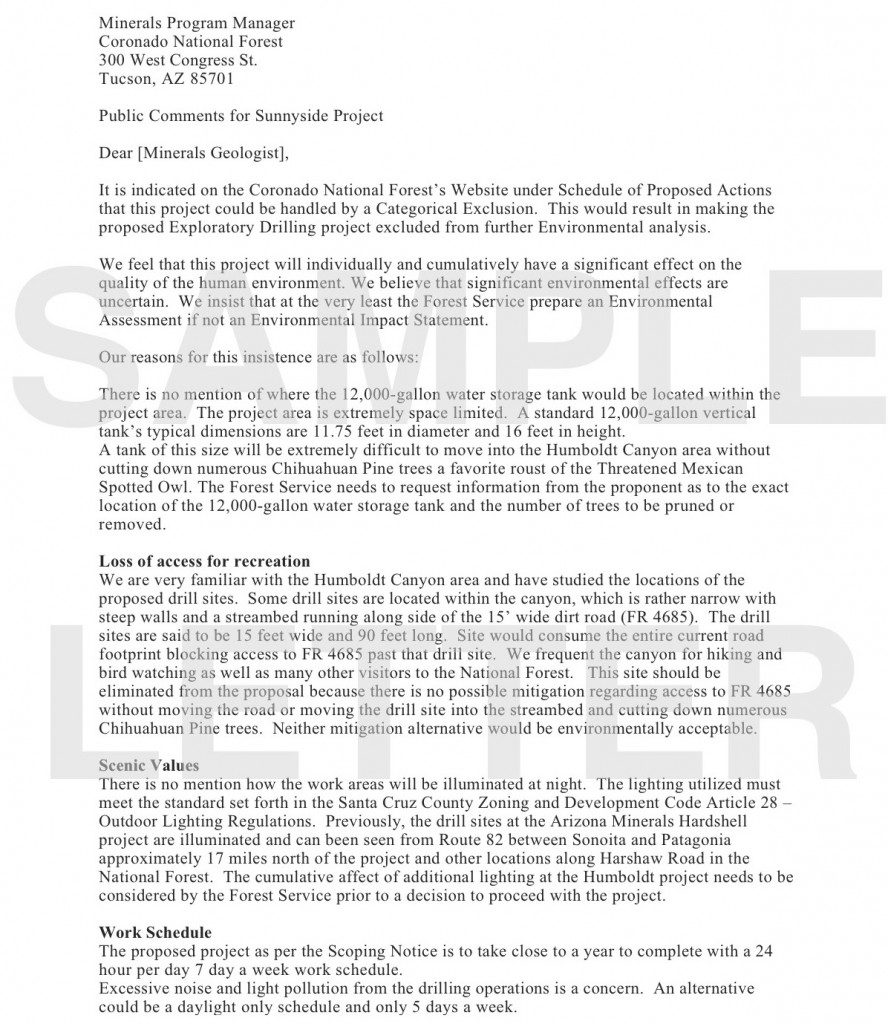
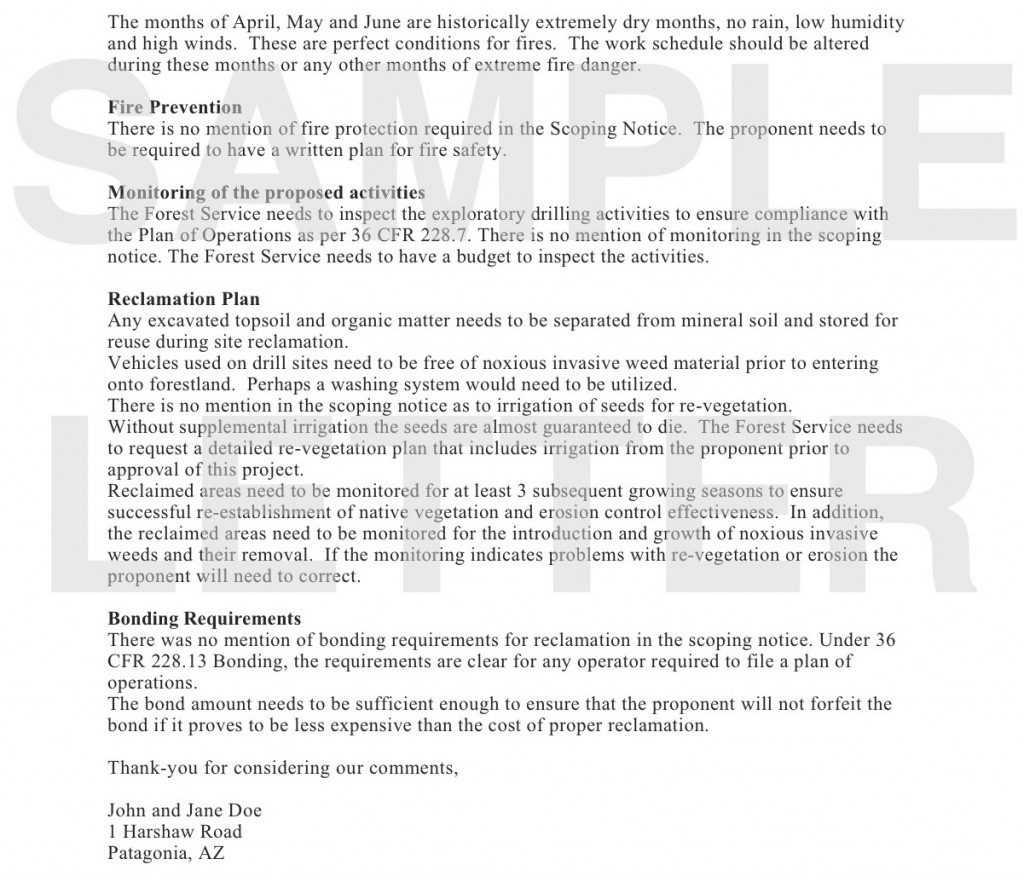
———————-
1. Council for Environmental Quality (CEQ) Regulations for Implementing the National Environmental Policy Act (40 CFR 1508.4). Available at nepa.gov/ceq_regulations/regulations.html
2. USFS NEPA Handbook; FSH 1909.15; 36 CFR 220.6(e)(8)). Available online at http://www.patagoniaalliance.org/wp-content/uploads/2013/08/US-Forest-Service-NEPA-Handbook_Categorical-Exclusion-regs.pdf
3. USFS NEPA Handbook, FSH 1909.15; 36 CFR 220.6(b). Available online at http://www.patagoniaalliance.org/wp-content/uploads/2013/08/US-Forest-Service-NEPA-Handbook_Categorical-Exclusion-regs.pdf

